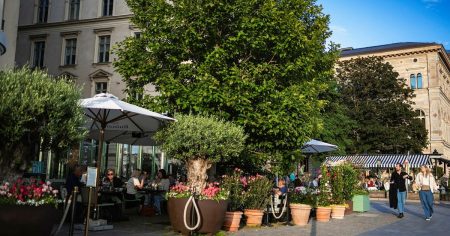Sonia Hedstrand’s vehement reaction to the documentary ”Fallet Bogdan” reveals a concerning misunderstanding about the nature of research, even within the artistic realm. Her criticism seems rooted in a belief that artistic research operates outside the boundaries of scrutiny, a notion that fundamentally misrepresents the principles of intellectual inquiry. All research, regardless of its disciplinary origins, must remain open to critical examination, debate, and even refutation. Hedstrand’s apparent defensiveness suggests a conflation of artistic expression with irrefutable truth, a dangerous proposition that undermines the very essence of academic freedom and the pursuit of knowledge. The documentary’s questioning of her research methodology, far from being an attack, should be seen as a crucial component of the scholarly process.
Artistic research, while employing different methodologies than traditional scientific research, still operates within a framework of rigorous investigation. It involves formulating research questions, exploring relevant data or artistic materials, developing interpretations, and presenting findings that contribute to a broader understanding of a particular subject. Just as scientific research is subject to peer review and critical analysis, so too should artistic research be open to scrutiny, debate, and alternative interpretations. The inherent subjectivity often associated with artistic expression does not exempt it from these crucial processes. In fact, acknowledging the subjective elements and engaging in open dialogue about their influence strengthens the research, rather than diminishing it. Hedstrand’s apparent resistance to this principle reveals a fundamental misunderstanding of the very foundations upon which credible research, artistic or otherwise, is built.
The documentary’s exploration of ”Fallet Bogdan” likely engages with Hedstrand’s artistic research through a critical lens, examining the methodologies employed, the interpretations derived, and the potential biases informing her work. This critical examination is not an attack on artistic expression, but rather a vital component of intellectual discourse. It fosters a deeper understanding of the research subject, its complexities, and the potential limitations of the chosen methodology. By refusing to acknowledge the validity of such scrutiny, Hedstrand risks creating an echo chamber where her own perspective remains unchallenged, inhibiting the potential for growth and further understanding within the artistic research community.
Furthermore, the principle of academic freedom necessitates an environment where ideas can be freely explored, debated, and even challenged. This principle applies equally to all forms of research, including artistic research. Hedstrand’s reaction to the documentary suggests a desire to shield her work from criticism, effectively limiting the very academic freedom that allows her artistic research to flourish in the first place. The strength of any research lies not in its immunity to criticism, but in its ability to withstand scrutiny and emerge refined, revised, and ultimately, more robust. By embracing critique, researchers, including artists, contribute to a dynamic and evolving intellectual landscape that benefits all.
The suggestion that artistic research should be exempt from questioning perpetuates a dangerous misconception about the nature of knowledge creation. It implies that artistic expression is somehow beyond the realm of critical inquiry, a notion antithetical to the very spirit of intellectual exploration. All forms of knowledge production, whether scientific, artistic, or humanistic, are inherently provisional, subject to revision and refinement through ongoing dialogue and critique. Embracing this process of continuous evaluation strengthens our understanding of the world and allows for the emergence of more nuanced and comprehensive perspectives.
In conclusion, Sonia Hedstrand’s response to the documentary ”Fallet Bogdan” highlights a critical need for greater clarity regarding the role of critique within artistic research. Her apparent resistance to scrutiny reveals a misunderstanding of the fundamental principles underpinning all forms of research, including those situated within the artistic domain. The questioning of research methodologies, interpretations, and potential biases is not an attack on artistic expression; it is a crucial component of intellectual discourse, a cornerstone of academic freedom, and a necessary catalyst for the advancement of knowledge. By embracing critical examination, artists and researchers alike contribute to a more robust and vibrant intellectual ecosystem where ideas are tested, refined, and ultimately contribute to a deeper understanding of the world around us. The documentary, regardless of its specific critiques, provides a valuable opportunity for critical reflection and constructive dialogue within the artistic research community, an opportunity that should be embraced rather than rejected.














